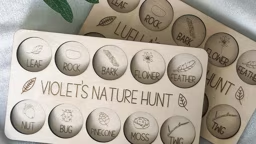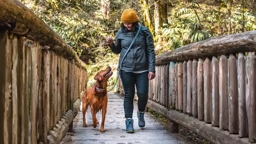
Here’s the scenario: you’re backpacking on your own deep in the wilderness – you thought you came prepared to survive, but you forgot your favorite firestarter on the kitchen counter before you left, your lucky lighter ran out of fuel making the fire for breakfast this morning, and you just fell in a stream, soaking you to the bone and rendering your trusty matches soggy and useless. Now you’re in desperate need of a fire to dry yourself off and warm up, but your fire-making tools are in disarray.
So now for the question: how do you start a fire in such dire circumstances?
Friction
One of the most fundamental ways to get an ember burning is the iconic method of rubbing two sticks together. It’s not quite as simple as that makes it sound, but these techniques can be used with minimal tools and materials you can find out in the wilderness.
Hand Drill
The basic Hand Drill only requires a few pieces of wood and a knife. Using a Hand Drill to spark a fire is no small task though, as it relies solely on the force you apply to create friction.
-
First you’ll need a fireboard. Find a hard, flat piece of wood about ½” thick. Using your knife, start to cut a hole into the board ½” from the edge, making a nice divot. Finally, cut a V-shaped notch into the edge of the board next to the divot. Now your fireboard is ready to use.
-
Next you’ll need a spindle. Take a short, thin stick, and whittle one end down to a point. It doesn’t need to be sharp, it just needs enough of a point to keep it in the divot on the fireboard.
-
Last, find a leaf or piece of bark and place it under the notch on your fireboard to catch the ember when it falls off.
-
Now that all the pieces are ready, all you have to do is spin the spindle in the divot on the fireboard until it starts to burn. Easy, right?
-
Wrong. While simple to set up, the Hand Drill can be incredibly difficult to get burning. It takes a lot of force and effort. Firmly grasp the spindle between both hands and spin as fast as you can, all the while pushing down.
-
After a while of hard pushing and spinning, the divot in your fireboard will start to smolder. When it starts smoking on its own, stop spinning and gently blow on your smoldering ember.
-
As the ember grows, continue to blow on it. Once it’s ready, it should fall right off your fireboard and onto your waiting leaf and bark, ready to be transferred to a waiting campfire.
Bow Drill
The Bow Drill takes the concepts of the Hand Drill and adds a twist – literally. You’ll still be spinning a stick on top of a board, but a couple of added tools (which can still be found out in the world) make things a lot easier.
-
The fireboard, spindle, and leaf or bark used to catch the ember are all the same, so prepare them the same way you would for a Hand Drill.
-
The key component that defines the Bow Drill is the bow. Find a stick about as long as your arm. It needs to have a little bend in it.
-
Using your shoelace, or any other strong piece of string you have, string your bow. Tie the string near each end of the bow, leaving just a bit of slack for the spindle.
-
The last thing you’ll need is a socket, something you can use to hold the spindle in place while it spins. A rock with a divot in one side that you can hold in your palm will work perfectly.
-
Now to put it all into action. Take the spindle and twist it into the string of the bow. Hold the bow in your dominant hand, put the spindle into the divot of the fireboard, and hold the spindle in place with the socket in your non-dominant hand.
-
Pushing down firmly on the socket, start moving the bow quickly back and forth in a sawing motion. As you do, the spindle will start to spin much faster and with much less effort than in the Hand Drill.
-
Keep it up and you’ll have an ember in no time. Gently blow on it to nurture it, and transfer it to your campfire when it’s ready.
Fire Plough
The Fire Plough method takes the idea of rubbing two sticks together in a different direction. Instead of spinning a stick in a divot, you’ll be scraping a stick along a groove.
-
Once again, prepare the spindle and leaf or bark to catch the ember.
-
Find something to use as a fireboard. This time, however, instead of a divot you’ll need to cut a groove down the length of the fireboard, about ½” deep. The bark or leaf will go beneath the end of the board.
-
Hold the tip of the spindle in the groove on the fireboard at an angle. Firmly press down and start to rub the spindle back and forth in the groove.
-
As you create friction, the burning embers and debris will be pushed down the groove and off the edge. Soon an ember will form on the leaf or bark. Blow on it gently, and transfer to your campfire.
See also Campfire Safety Tips
Flint and Steel
A flint and steel kit is another great tool to have with you when you’re camping – it’s a simple way to make a spark that you don’t have to worry about getting wet or running out of fuel. Striking a flint with steel causes tiny curls of steel to peel off and explode, which is what makes the sparks.
You can also make your own flint and steel with nothing but a rock and your trusty pocketknife. Any quartz rock will serve as a substitute to flint, and you can strike it with the back of your knife blade to cause sparks.
It’s recommended that you have something to catch the sparks with this method. A char cloth, a type of cloth that has been burned, is perfect for holding and nurturing sparks. If you don’t have any char cloth on hand, you can use dry moss or fungus from trees.
-
Holding the flint and spark catcher in one hand and the steel in the other, rapidly strike the steel against the flint to make sparks.
-
Continue until the spark catcher catches a spark and starts to glow.
-
Gently blow on the sparks and transfer them to your tinder bundle.
See also Fun Around the Campfire
Lenses
Another fire-making tool that you can find in abundance in nature is the sun. Refracted properly through a lens, light from the sun can provide enough heat to start a fire burning. Anything from a magnifying glass to a pair of glasses, or even a piece of ice can be used to magnify the suns rays if it’s clear enough.
Using a lens to start a fire is a simple matter of angling the lens in the direction of the sun’s rays until it focuses a beam on your tinder. It can take a minute to find the right angle, and once you do, you’ll have to hold it there for a little while. Sooner or later, though, your tinder will catch and you’ll have a fledgling fire on your hands.
When it comes to surviving in the wilderness, preparation is vital. If you plan ahead well enough, you’ll probably never even find yourself in a situation where you need to know the information in this guide. But sometimes things don’t go according to plan, and then all of your preparation won’t matter. That’s when you’ll be able to look around you and combine what you find in nature with the knowledge in this guide to make a fire that could be the difference between life and death.










